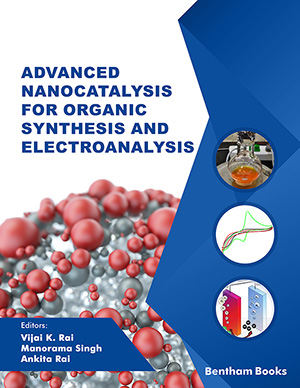Abstract
Organic cross-coupling reactions have been broadly utilized in the synthesis
of various organic products and valuable compounds. It is considered the backbone for
the synthesis of various medicinally significant compounds. Although numerous
organic compounds are made out of C-C bonds, however, the presence of heteroatoms,
like nitrogen, oxygen and sulfur, makes them utilitarian. Conductive polymers and
drugs often contain amine C-N bonds, and practically, the majority of natural products
contain ether, ketone, or ester C-O bonds. Heterocyclic compounds containing C-N, CO,
or C-S bonds in the ring structure are found in all applications of chemistry. As a
result of the developing significance of these cross-coupling reactions, the advancement
of new extemporized strategies for the synthesis of such items has become the
most elevated need for some researchers. Researchers are zeroing in on the advancement
of green synthetic methods for the synthesis of such compounds. Catalysis is
steadily overwhelming in the field of synthesis because of the expanding capacity to
plan new materials with improved synergist exhibitions. Catalysis is proclaimed as a
more up-to-date process that shows stability, durability, higher activity, and cost
viability analysis. High-yielding cross-coupling reactions using supported catalysts are
also reported, resulting in the development of a large number of very effective catalysts
for organic cross cross-coupling processes.. Heterogeneous catalysis has the advantage
of easy separation and compared to homogeneous catalysis, product isolation requires
less amount of the solvent. However, sometimes there may be a compromise in the
selectivity process. This chapter contains a detailed discussion on different carbonheteroatom
cross-coupling reactions mediated by supported transition metal-based
catalysts. The scope of these cross-coupling reactions in the pharmaceutical and
industrial sectors has been investigated. Exceptional methodologies and significant
advances accomplished in the field of carbon-heteroatom cross-coupling reactions have
been talked about.







